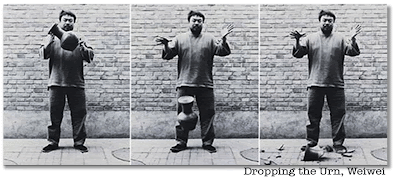The Issue of Intellectual and Cultural Property
The intellectual property and cultural property issues can be as complex as they may be contentious. To add another layer to the contentiousness, intellectual property (IP) and cultural property (CP) sometimes coincides with common law property rights and conventions as if in isolation there is not enough contention already.
With the advent of the Internet and new(?) digital technologies, information, images and ideas flow, and some contexts traded, more freely than ever before and often at the speed of light. Unavoidably these now blurred older understandings put the circumstances in place for new paradigms to be exercised.
Consequently, museums as the custodians of cultural and intellectual property, currently operate within cultural parameters almost totally unfamiliar to museum and art gallery trustees, directors and curators of 20 or so years ago.
All too often, the conventions and regulations invoked by a great many cultural institutions were put in place decades before the advent of the Internet thus rendering them passé, outmoded and largely inappropriate in a 21st C context.
What was once impossible is now possible and what was once appropriate may longer be so or visa versa. Options change and grow over time – and accordingly paradigms shift.
Photography has been with us for over 170 years and for a large part of that time it has often carried the baggage of being not quite legitimate. At the same time it has been seen as being somewhat ubiquitous given all that it can and has delivered in a cultural context – not to mention the current almost universal access to photographic technologies. Photography simultaneously presents threats and is a liberating force that is facilitating the more effective communication of ideas.
Interestingly, the language that surrounds photography bears all this out somewhat.

For example, when one “takes” a photograph there is a subliminal subtext of less than totally sanctioned legitimacy. “Take” carries layers of contextual meaning. “Take” can be taken to mean, obtain, steal, filch, get, seize, win, conquer, pinch, lift, embezzle, rob, receive and more still depending upon the context. Meaning is always found in the context and there is perhaps no better word than “take” to demonstrate this.
In some cultural contexts ‘taking a photograph’ of someone is tantamount to stealing their identity, or a part of it at least, and in another it may be taken to be an invasion of their privacy. In another context, the photograph may be seen as the preservation of a moment – variously significant. In yet another context the same photograph may be seen as a constructed image and one that is not by necessity entirely truthful.
The claim that a camera cannot lie is serially disproved.
The taking and making of photographs, in actuality and in all contexts, is not a simple matter and always dependant upon context.
Therefore, it goes almost without saying that the taking and making of photographs/images of objects in a museum/art gallery collection is in some contexts always contentious in various ways depending on the context.
Adding to the contentiousness here comes the kindred issues of IP and CP rights and conventions. Legally photographers have IP rights plus moral rights in the photographs/images that they take/make. This is so in much the same way as the cultural producers do when their work is the subject of and/or the object of a photographer’s imagemaking.
Little wonder that photography is a contentious technology and cultural pursuit given the slippery social and cultural contexts within which photography takes place.
Nevertheless, Australian copyright law – section 40 of the Copyright Act 1968 (as amended) – allows for certain ‘fair use’ exemptions for the non-commercial use of an authors’ IP.
They are for the purpose of:
- Research or study;
- Criticism or review;
- The reporting of news, and
- The giving of professional advice by a lawyer or a patent or trade marks attorney.
In all cases there is an obligation on the part of the photographer/researcher/reporter to acknowledge the authorship of the cultural producer and most often the photographer as well.
In a museum/gallery context the institution has a moral obligation to supply details of copyright holders where possible. Likewise institutions have an obligation to alert the users of their collection to cultural property issues and sensitivities – particularly in the case of Aboriginal cultural production.
However, it is the sole responsibility of the photographer/publisher to gain copyright and other permission to reproduce an image in a commercial context from the copyright holder – not always the museum/gallery, indeed infrequently so.
This is also true for the museum/gallery when it is using such images for a commercial purpose where and when it has not made other formal arrangements with the author/s.
Clearly the purpose of these copyright exemptions is to allow for the free exchange of ideas within certain contexts – research and review broadly speaking.
The kinds of blanket restrictions imposed by some institutions stifle the kind of interrogation and examination of cultural production and property held in public and other collections.
Wherever this is the case such restrictions need to be challenged and vigorously.





















